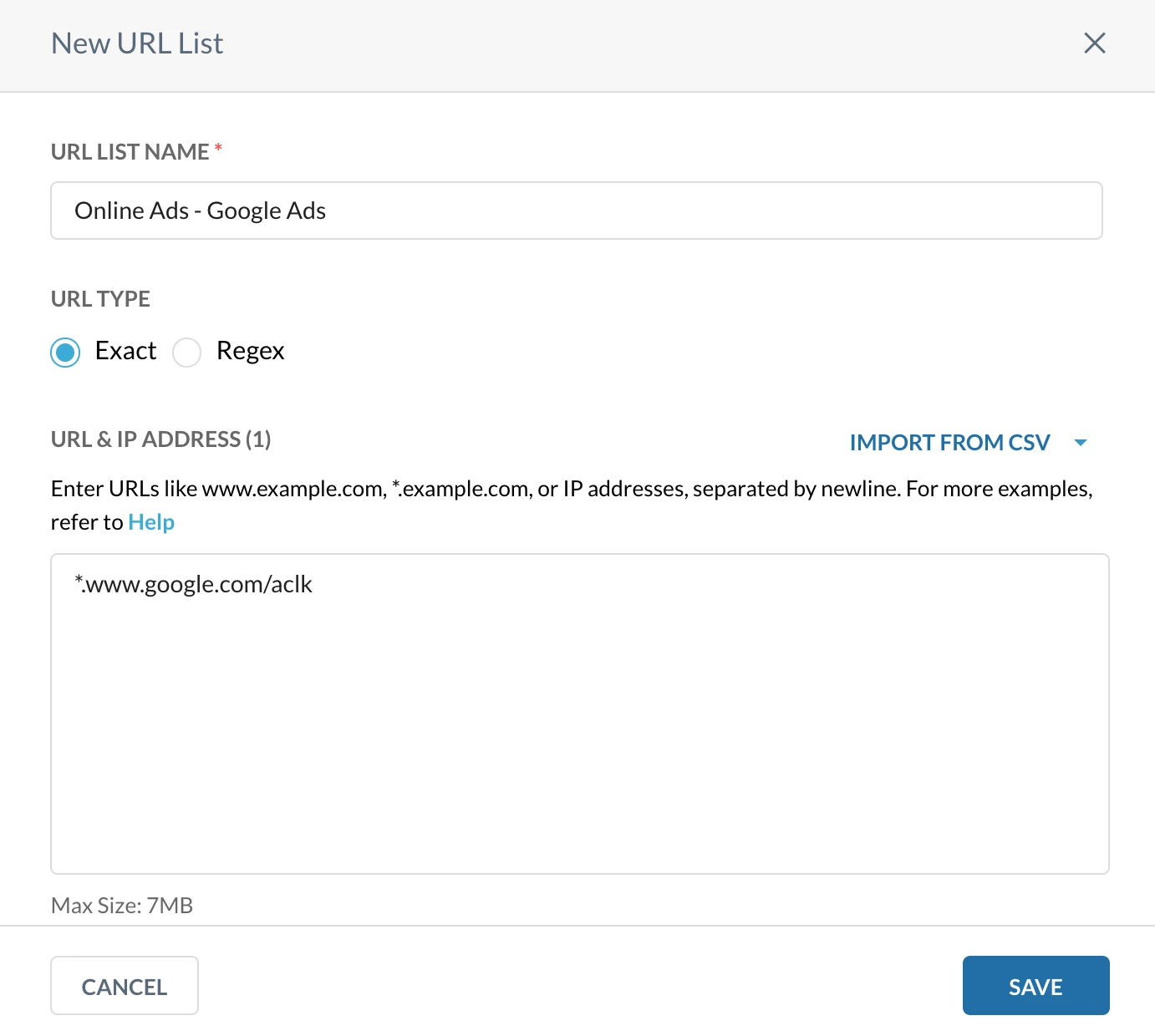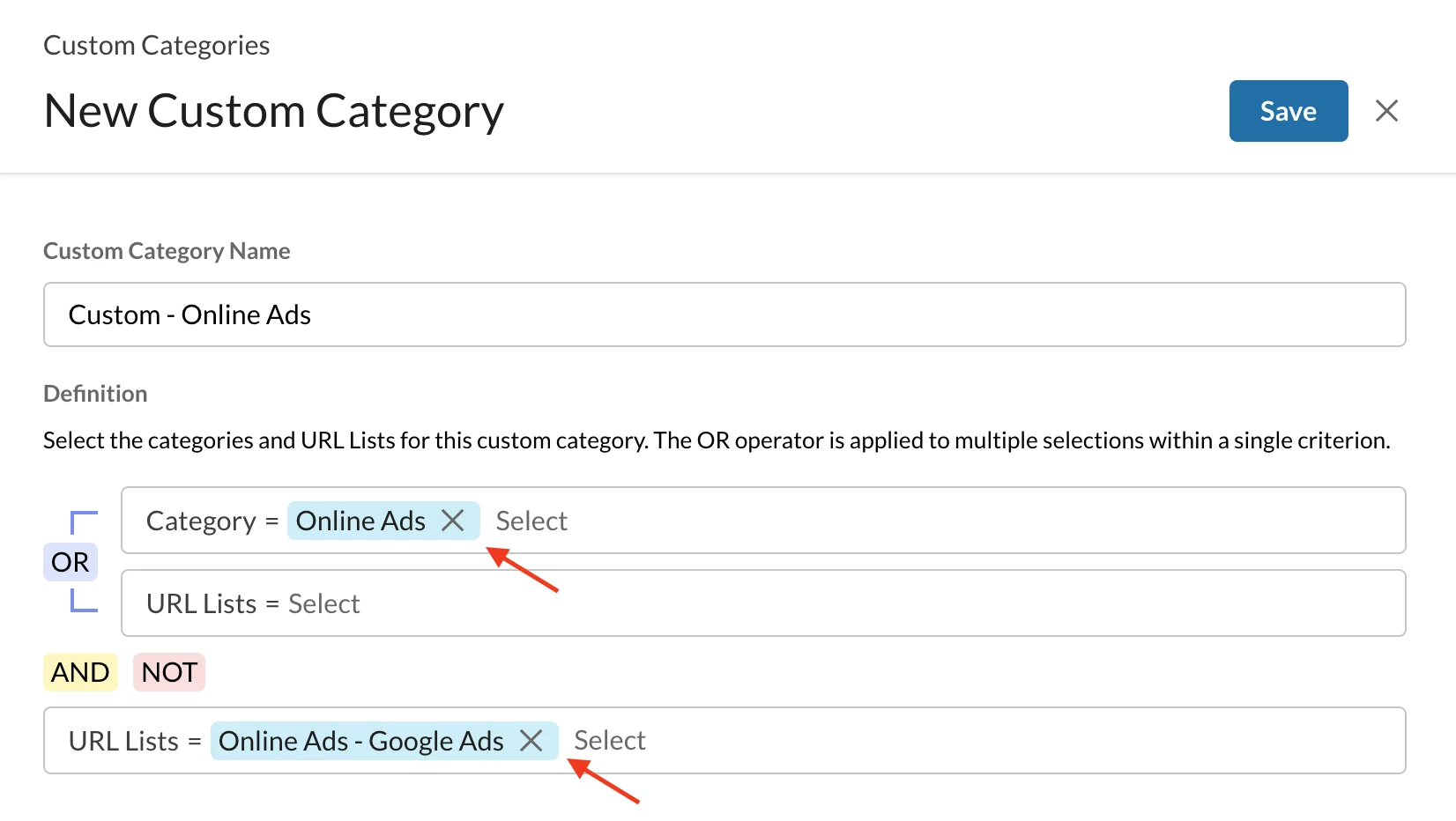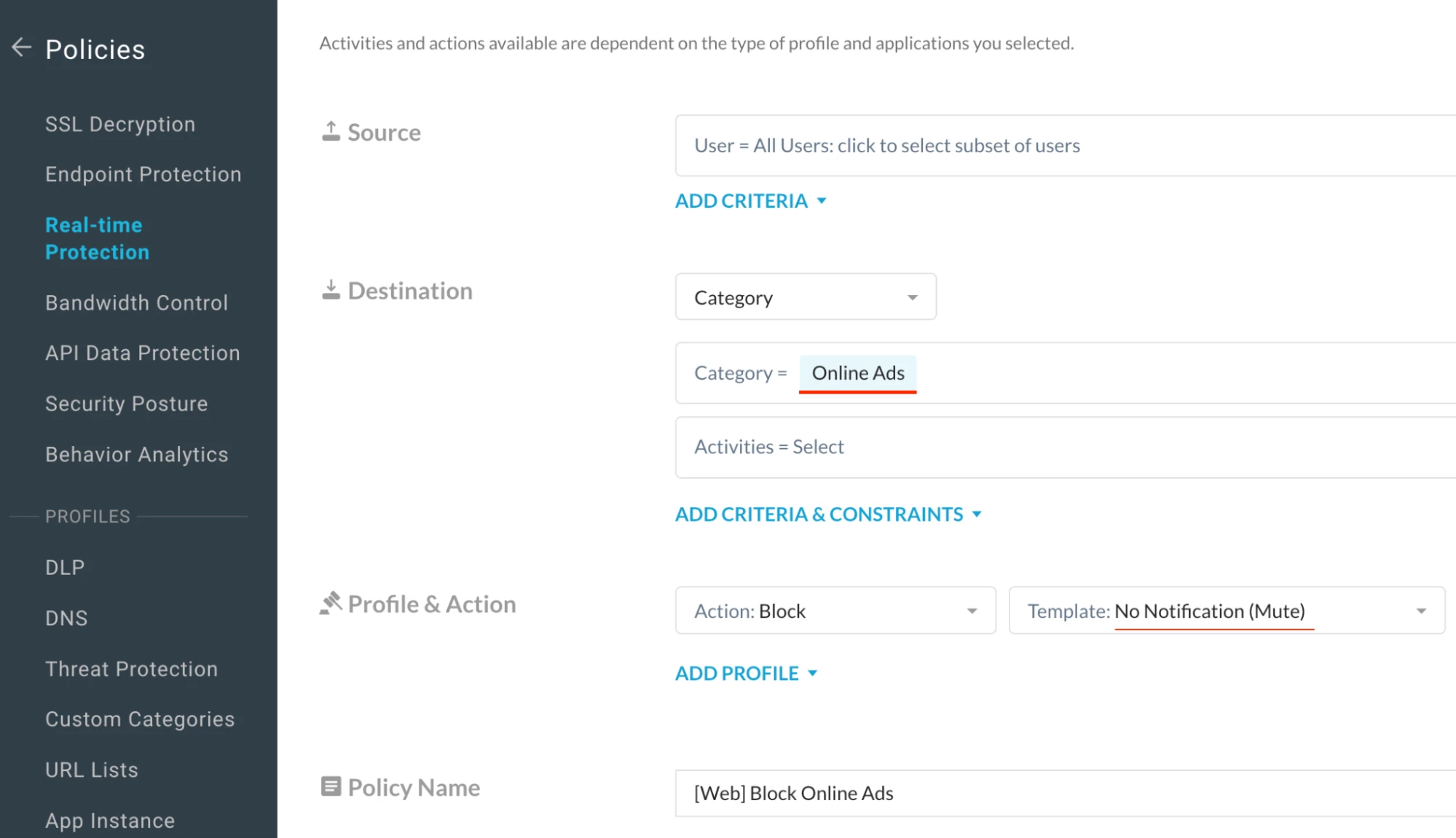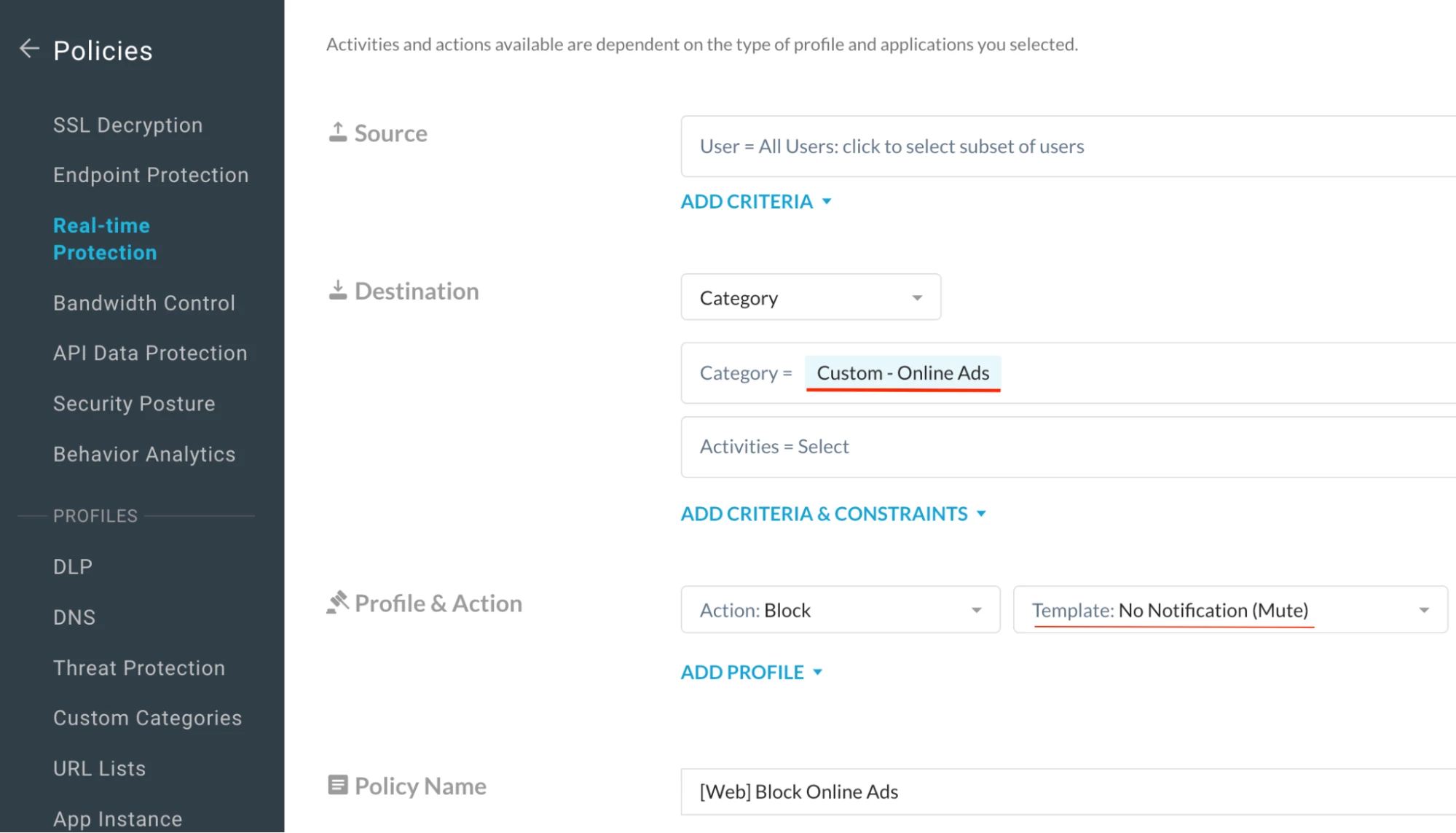
Netskope Global Technical Success (GTS)
Allow Only Google Ads & Sponsored Content
Netskope Cloud Version - 130
Objective
In some cases, customers may wish to allow Ads and Sponsored Content while blocking all other Online Ads.
Prerequisite
Netskope SWG or Next-Gen SWG license
Author Notes
It is recommended to review the articles listed below before proceeding further.
Reference Article 1 - Link
Reference Article 2 - Link
Context
Customers with a real-time policy blocking the ‘Web Category - Online Ads’ may wish to allow their end users to access Ads and Sponsored Content appearing during Google Search. This article provides a step-by-step process to achieve this business use case.
Do You Know?
- As per the details covered in Reference Article 2, when an end user clicks on a sponsored link, the traffic first goes to www.google.com/aclk and is then redirected to the original destination. The URL www.google.com/aclk is mapped under web category ‘Online Ads’
- To achieve the use-case we need to whitelist www.google.com/aclk
Configuration
Step 1: Create a custom URL category
Path: Netskope Tenant UI >>> Policies >>> Profile - - - URL Lists


Path: Netskope Tenant UI >>> Policies >>> Profile - - - Custom Categories


Step 2: Replace the web category in the existing Realtime Protection policy from Online Ads to Custom – Online Ads
Path: Netskope Tenant UI >>> Policies >>> Real-time Protection >>> New Policy
Existing Realtime Protection policy


New Realtime Protection policy


- Blocking traffic to the ‘Online Ads’ URL category is one of Netskope’s best practices, typically implemented with a ‘Mute’ notification to prevent disruptive pop-ups for end-users.
Author Notes
- Google may have other URLs as well which they are using for Ads & Sponsored content. Once identified, customers can add them to the custom URL list to whitelist respective traffic.
Terms and Conditions
- All documented information undergoes testing and verification to ensure accuracy.
- In the future, it is possible that the application's functionality may be altered by the vendor. If any such changes are brought to our attention, we will promptly update the documentation to reflect them.
Notes
- This article is authored by Netskope Global Technical Success (GTS).
- For any further inquiries related to this article, please contact Netskope GTS by submitting a support case with 'Case Type – How To Questions'.





